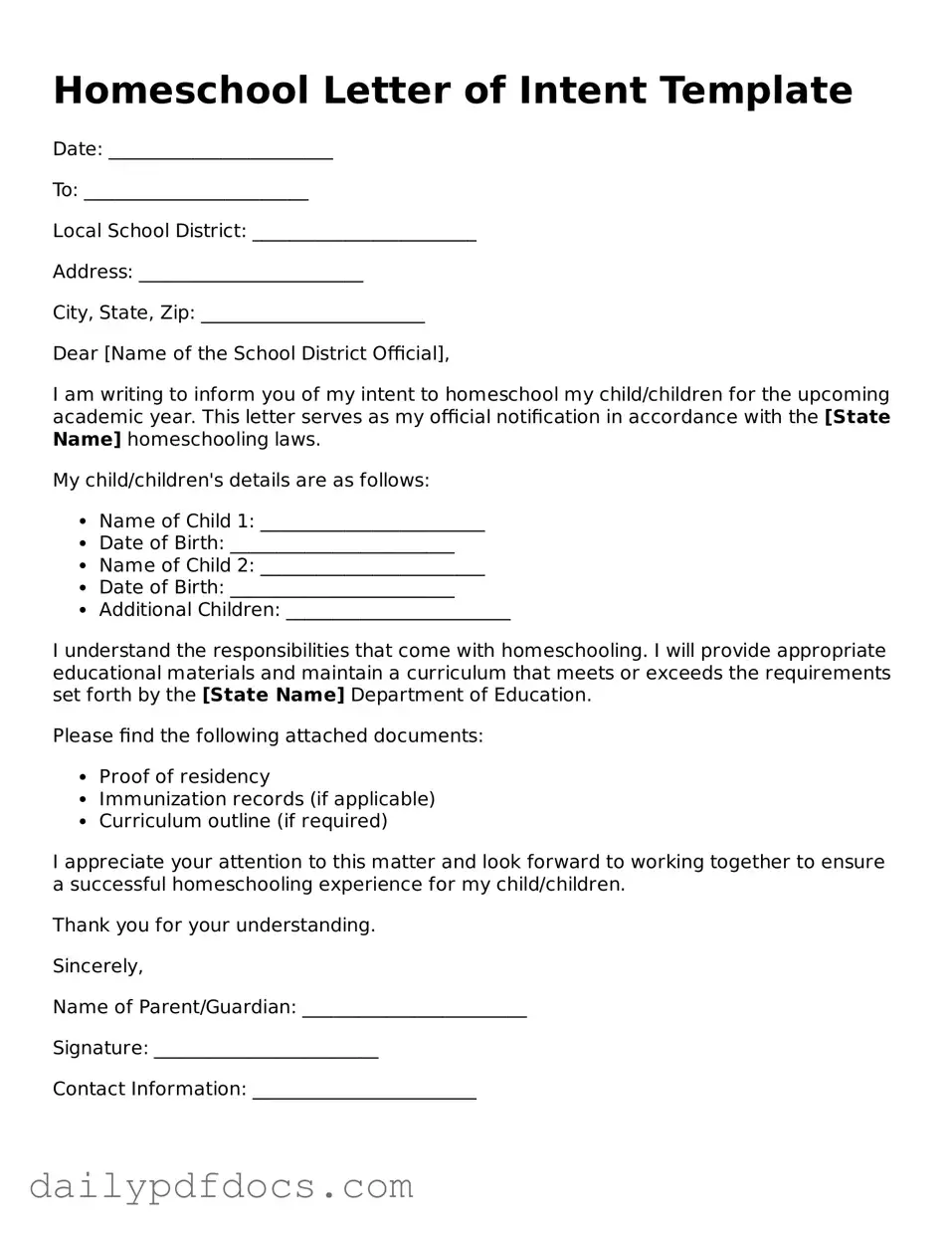Homeschool Letter of Intent Template
Date: ________________________
To: ________________________
Local School District: ________________________
Address: ________________________
City, State, Zip: ________________________
Dear [Name of the School District Official],
I am writing to inform you of my intent to homeschool my child/children for the upcoming academic year. This letter serves as my official notification in accordance with the [State Name] homeschooling laws.
My child/children's details are as follows:
- Name of Child 1: ________________________
- Date of Birth: ________________________
- Name of Child 2: ________________________
- Date of Birth: ________________________
- Additional Children: ________________________
I understand the responsibilities that come with homeschooling. I will provide appropriate educational materials and maintain a curriculum that meets or exceeds the requirements set forth by the [State Name] Department of Education.
Please find the following attached documents:
- Proof of residency
- Immunization records (if applicable)
- Curriculum outline (if required)
I appreciate your attention to this matter and look forward to working together to ensure a successful homeschooling experience for my child/children.
Thank you for your understanding.
Sincerely,
Name of Parent/Guardian: ________________________
Signature: ________________________
Contact Information: ________________________
